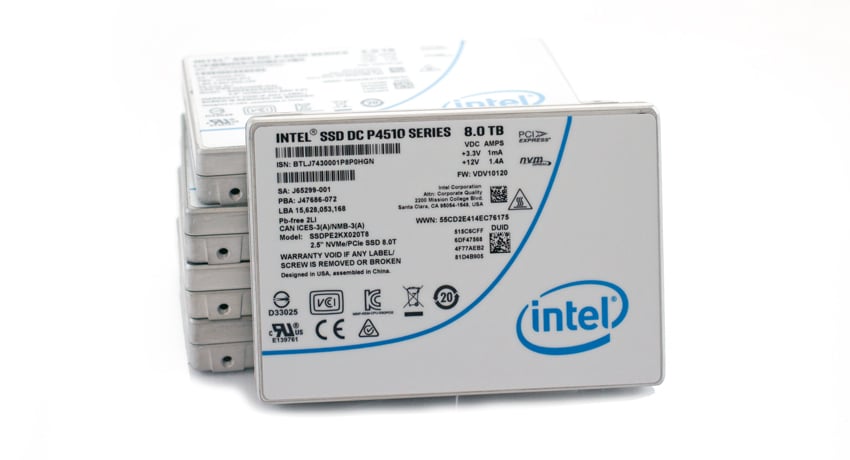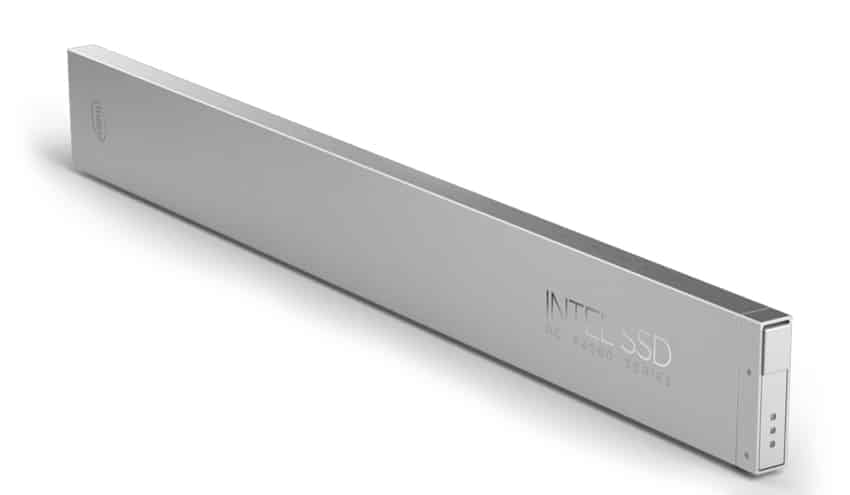Today Intel introduced its new data center SSD that it is calling “cloud inspired, storage optimized,” the Intel SSD DC P4510 Series. The new drive series offers up to 8TB in capacity and better performance and QoS than the previous version. Intel is also announcing broad industry collaboration on its EDSFF, or ruler, form factor.

The Intel SSD DC P4510 Series marks the company’s first enterprise 64-layer 3D NAND SSD. The series comes with twice the capacity, topping out at 8TB, and has a quoted improvement of 2x lower mixed workload latency and up to 10x lower read workload latency compared to the previous P4500 Series. Intel states that they new series can enable users to do more per server, minimize service disruptions, and efficiently manage at scale.
Intel SSD DC P4510 Series key specifications:
- Form factor: U.2, 15mm
- Media: Intel 3D NAND technology, 64-Layer, TLC
- Capacity: 1TB, 2TB, 4TB, 8TB
- Interface: PCIe 3.1 x4, NVMe 1.2
- Performance
- 128k sequential read: up to 3.2GB/s
- 128k sequential write: up to 3GB/s
- Random 4K read: up to 637K IOPS
- Random 4K write: up to 139K IOPS
- Endurance: 1 DWPD
- Power: up to 16W
- Warranty: 5-year
The new P4510 Series allows for much less storage space to be taken up while at the same time requiring much less power. The company claims up to 4x less storage space and up to 3x less storage power required comparing the P4510 to the P3520. The new drive series also covers a broad category of workloads with the reported benefits of a 12x IO workload scaling for NoSQL database, superior performance for FSI workload benchmarking, and a 3.75x bandwidth at 500μs latency.
With automated background task management, ease of deployment, combined with the improved 3D NAND architecture, users can see up to 10x better random read latency from the new Drive Series. This can reduce the chance of I/O stalls and help minimize service disruption. This is very import for several cloud workloads. The P4510 also combines firmware enhancements with its new NAND to deliver a 12x workload support at a given service level response time.
Enabling a higher capacity per server leads to a higher ability to scale and needs to be managed efficiently. To this end, Intel delivers dynamic namespace management increasing flexibility to scale as well as TCG Opal 2.0 and built-in AES-XTS 256-bit encryption engine for security. The P4510 has the capability to manage multiple firmware version on a drive, improving integration and deployment at scale.

Last year at the Flash Memory Summit, Intel unveiled its new ruler form factor or Enterprise and Datacenter SSD Form Factor (EDSFF). The new form factor was all about increasing density, providing optimum thermal efficiency, scalable performance, and easy maintenance. What initially seemed as a one off oddity in a world that already has several established form factors, is now gaining some traction toward a broader adoption. The Enterprise and Datacenter SSD Form Factor specification was recently ratified by the EDSFF Working Group, which includes Intel, Samsung, Microsoft, Facebook, among others. Intel has been shipping ruler SSDs to certain customers, such as IBM and Tenccent, over the last year with several SSD manufacturers expressing interest in developing their own EDSFF SSDs at some point.




 Amazon
Amazon